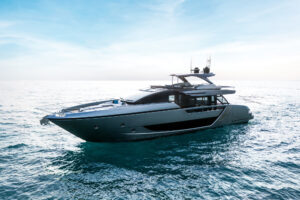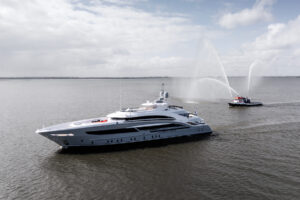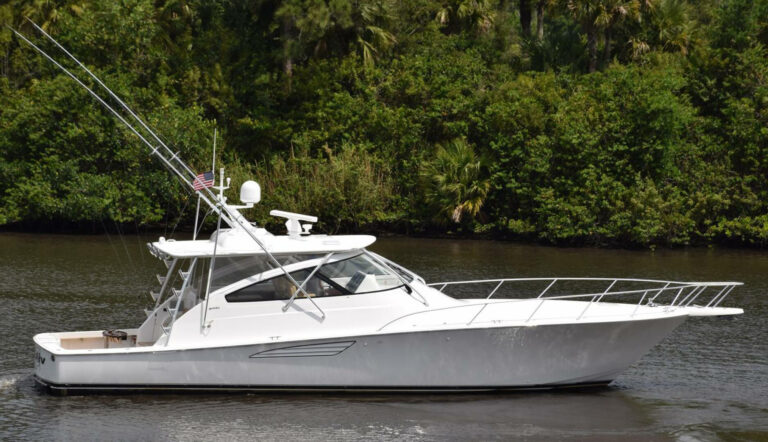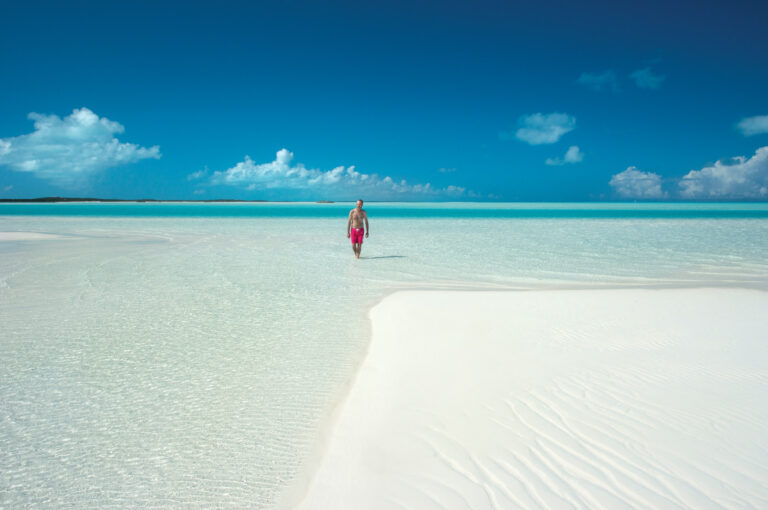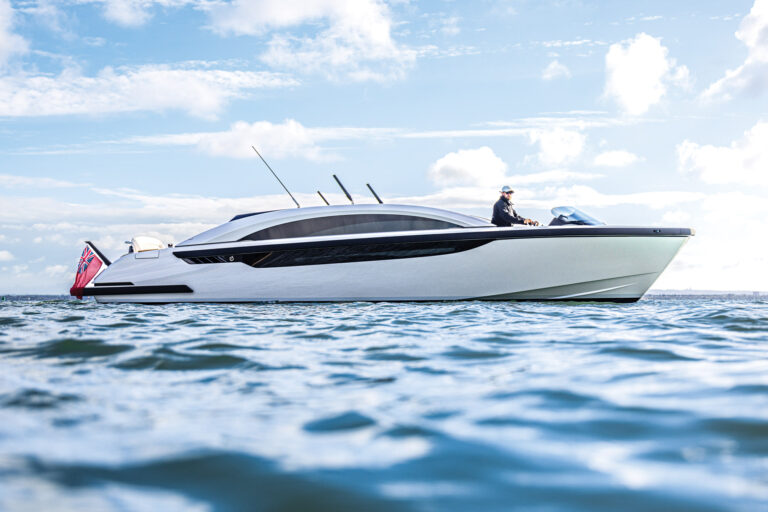Argentina is not exactly a nation known for its yachtbuilding excellence, so the new Altamar 50 will naturally be subject to intense scrutiny: How well was she designed? How carefully was she built? Such close inspection may not sound fair, but that’s the way it goes in this competitive market.
Well, you can dissect the Altamar 50 and examine her with a microscope, and what you will find is a superbly constructed, luxuriously appointed motoryacht fit to run with the world’s finest.
Her exterior styling is clearly European-inspired, with Italianate windows, a cantilevered flying bridge/electronics arch and ovoid ports below the sheer. The Altamar is thoroughly modern-but without the gewgaw design elements that would make her lines feel dated.
The 50’s handlaid fiberglass construction is conventional and does not have coring, resulting in a solid construction that allows owners to cruise without fear of rot or water absorption. The grid-like stringers also are free of wood and, after being molded separately, are thoroughly tabbed and glassed in place. Below the waterline, the Altamar 50’s exterior is finished with osmosis-inhibiting resins. Even the bilge is finished in immaculate white Awlgrip.
The rest of the yacht is a case of importing before exporting.
“Wood, leather and labor. That’s what we provide from Argentina”, said Altamar Yacht U.S.A. representative Ruben Berestan. “Everything else is chosen from the best in the world: European hardware and all-American systems and equipment.”
Her interior is finished in a South American ash with a delicate, pale grain, though cherry is optional. With a building schedule that yields just one Altamar 50 per month, owners can choose their own woods and leathers.
The curved settee in the saloon wraps around a burled maple Hi-Lo table and faces a cabinet to starboard, which houses the entertainment center. Large tinted windows provide a good view even to those who are seated, and the high overhead makes the large area seem even larger.
The galley, to starboard, is likely to polarize opinions: People will either love it or hate it. It is a true “down galley”, sunken into the saloon sole and semi-enclosed by a curved bulkhead that is open at the top. The strength of this arrangement is that it allows for a full-size refrigerator/freezer without blocking the view in the saloon, and it cleverly uses the areas under the saloon sole for counter space and stowage. The downside is that the galley is, well, down. I happen to like the arrangement for its openness; this way, the cook can remain part of the conversation. Those who dislike the arrangement can opt for a galley-up layout at the expense of space in the saloon.
The lower galley provides access to the crew cabin, which has a single berth, sink and head, all tucked under the saloon. Entry to this area is a bit tight, but it’s perfect for kids, who will love having their own “apartment close to the snacks. An alternate arrangement uses this space for a pantry.
A step up from the saloon is the pilothouse, where a banquette to port curves around a cocktail table. To starboard is a stylish, leather-finished dash with an array of Volvo Penta gauges and a full complement of standard electronics (radar, GPS, chart plotter, VHF and more). A comfortable double leather seat is for the skipper and a companion. At the skipper’s elbow is the electrical panel. The real beauty-its flawlessly loomed and neatly labeled wiring-lies behind a hinged panel.
Comfortable stairs lead below to a foyer, which is open to the windshield above, creating a skylight effect. The owner’s cabin with a double island berth fills the bow. The cabin’s two hanging lockers are actually suitable for hanging clothing, and built-in shelves are provided for sundries. A private head with a bull-nosed Corian counter and shower is to port.
Two surprisingly spacious guest cabins are just aft on either side of the stairs. The identical cabins have twin berths and large hanging lockers, and they share an oversize day head with a grated teak sole, Ferrum sink and Lucite shower enclosure.
The shallow flying bridge is tucked behind a wraparound venturi windscreen. A curved settee is opposite the doublewide helm and the console matches the one in the pilothouse. A wet bar with a barbecue is behind the helm seat. A large sunpad is aft, and a stainless-steel rail protects the cockpit stairs. The electronics arch is stylishly low, but our test boat had a rather awkward raised radome. (This is for clients worried about the potential health hazards of microwave exposure.) The wings on the arch are sized to handle satcom installations.
The teak-planked afterdeck is roomy enough for a dining table by the bench seat, which is centered between doors leading to the swim platform. Protected by topside extensions, this area also has plenty of room for a tender or PWC. A sunpad is forward. On our test boat, the sloping deck and the area around the anchor windlass were without a nonslip surface, a dangerous omission. Berestan said the problem would be corrected on future 50s.
Hands-on owners will delight in the engineroom, which has a diamond-plate sole and great access to steering and seacocks. A 13kW Kohler genset is standard, with room for a second generator. Three banks of batteries and a Heart Interface inverter provide power for quiet nights, and dual Marine Air air-conditioning units should handle the hottest weather with ease. Thoughtful touches include a notch in each engine bed to allow easy access to the shaft log, as well as sight gauges on water and fuel tanks.
On the day of our sea trial, the Atlantic was full of Sturm und Drang, including gray-beard rollers marked by spatters of rain, but the 50 handled conditions with aplomb. Up sea, down sea, beam sea; she was stable and solid, with nary a creak. Our test boat was powered by standard 480 hp Volvo Penta TAMD74 diesels, which are virtually bulletproof. The choppy seas and a foul bottom, however, took a toll on our test results-Berestan was disappointed with our top speed of 25 knots. (The boat should make about 30 knots, according to Volvo Penta.) Trim tabs are standard but not needed, since the Altamar came up to a plane flat and fast.
Argentina might not be on your shortlist of hot yachtbuilding nations, but if the well-equipped Altamar 50 is any indication, you may soon find yourself adding it.
Contact: Altamar Yacht U.S.A., (305) 919-9117; shcopy@bellsouth.net.

